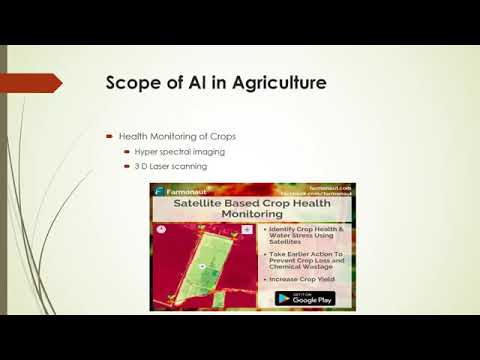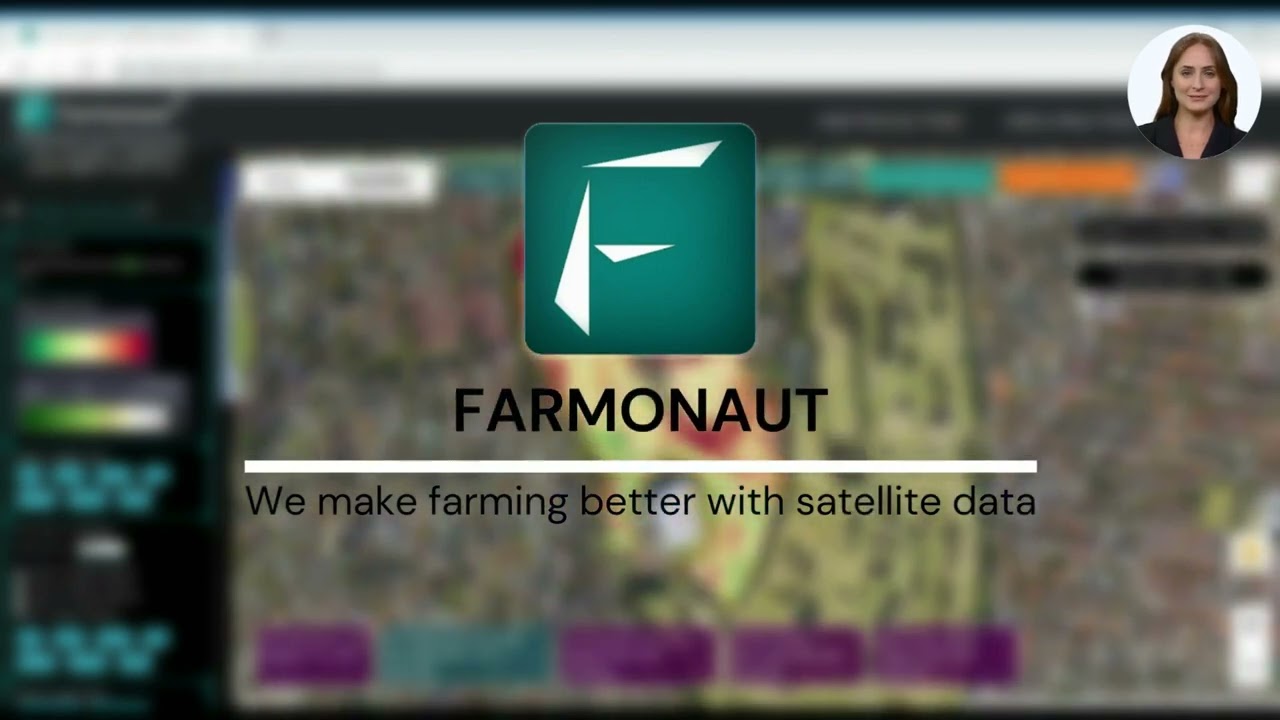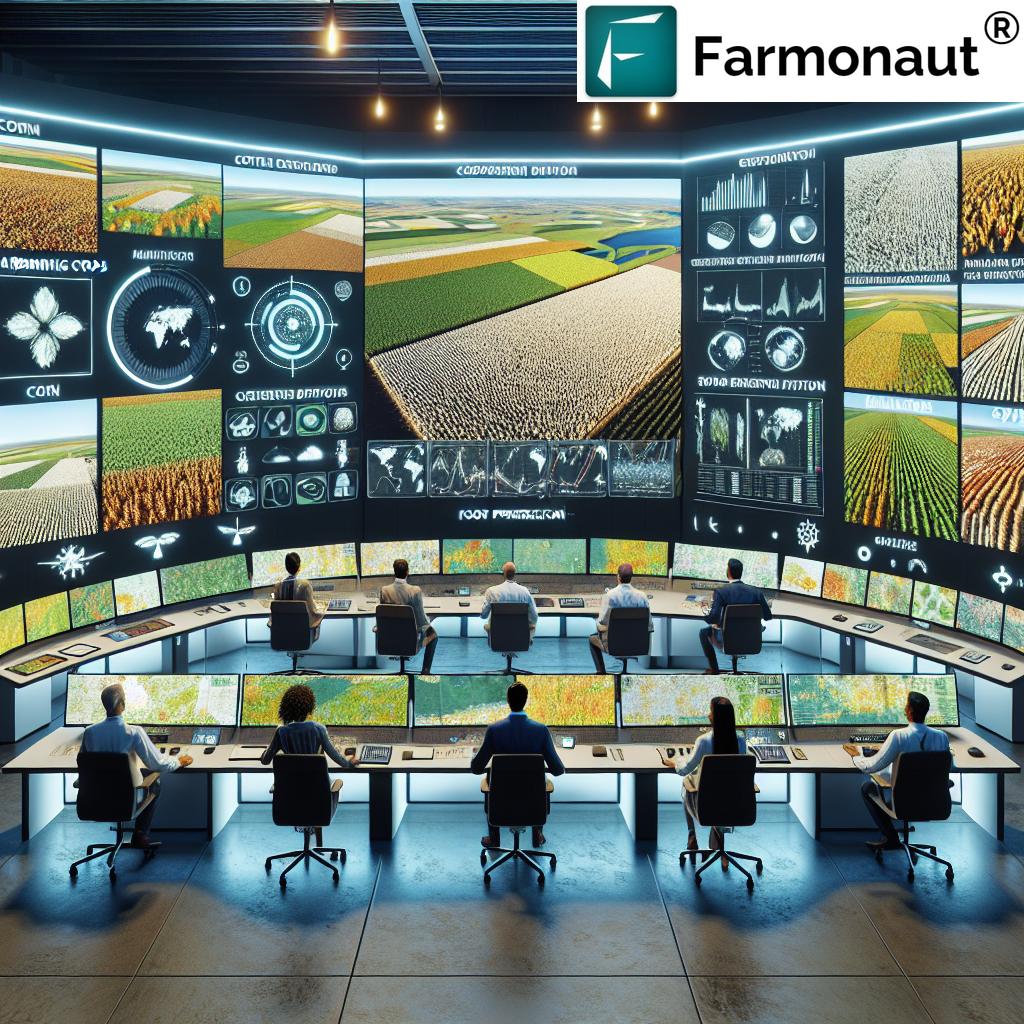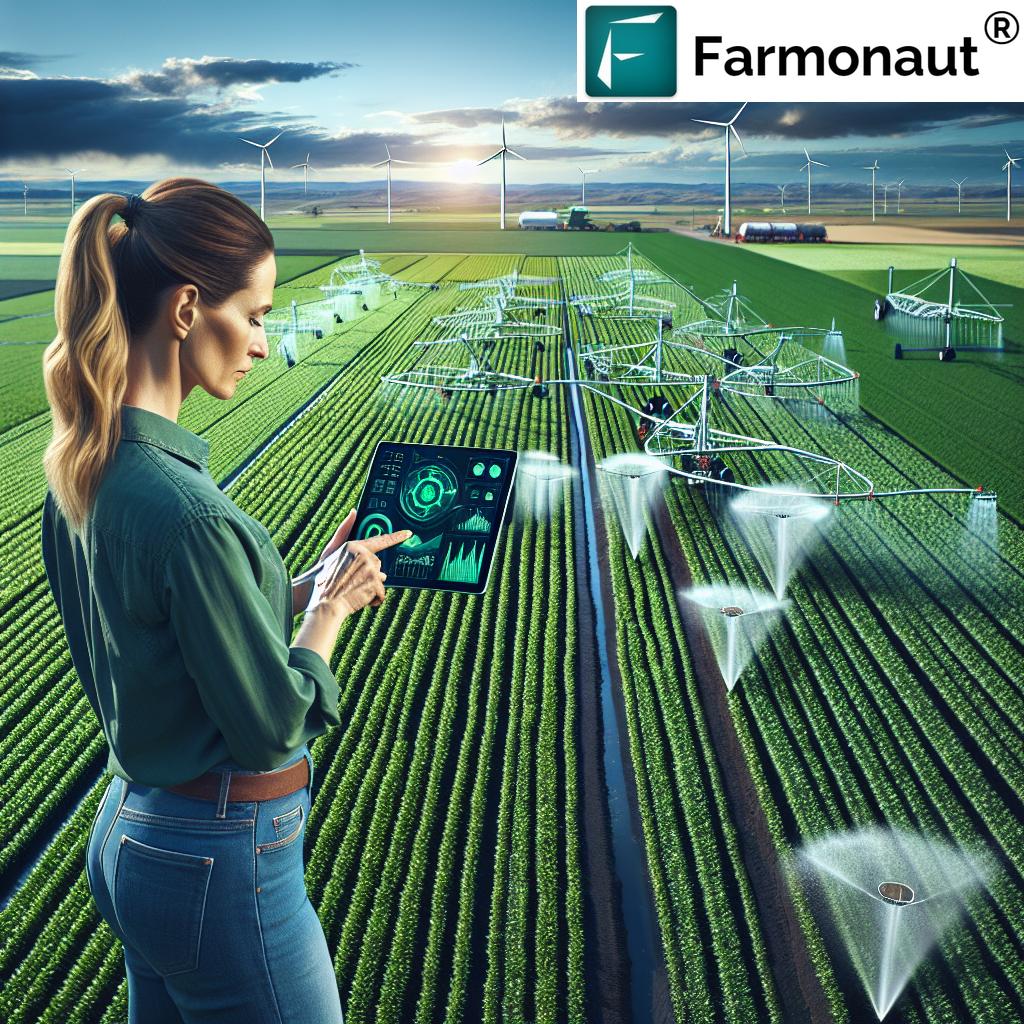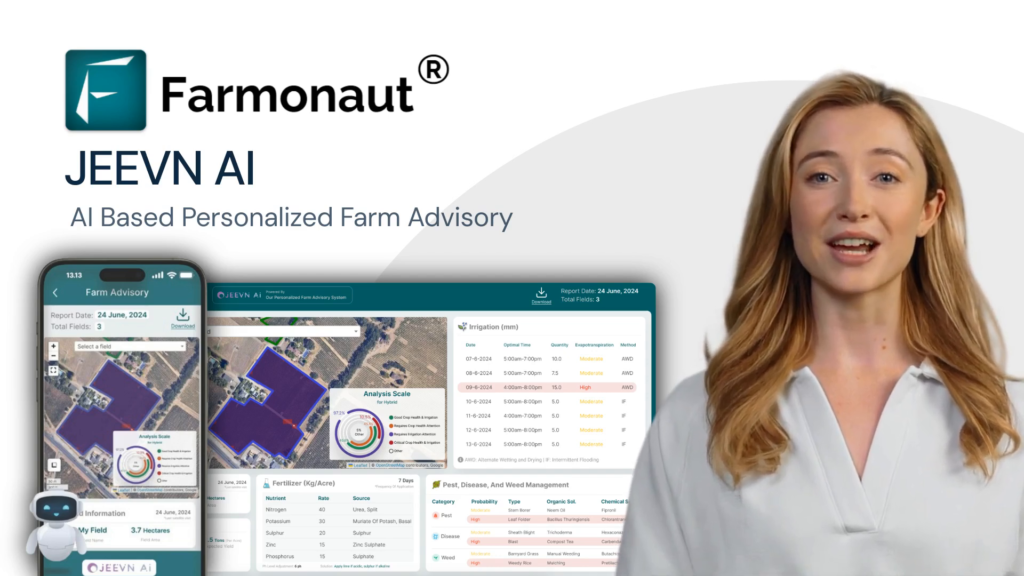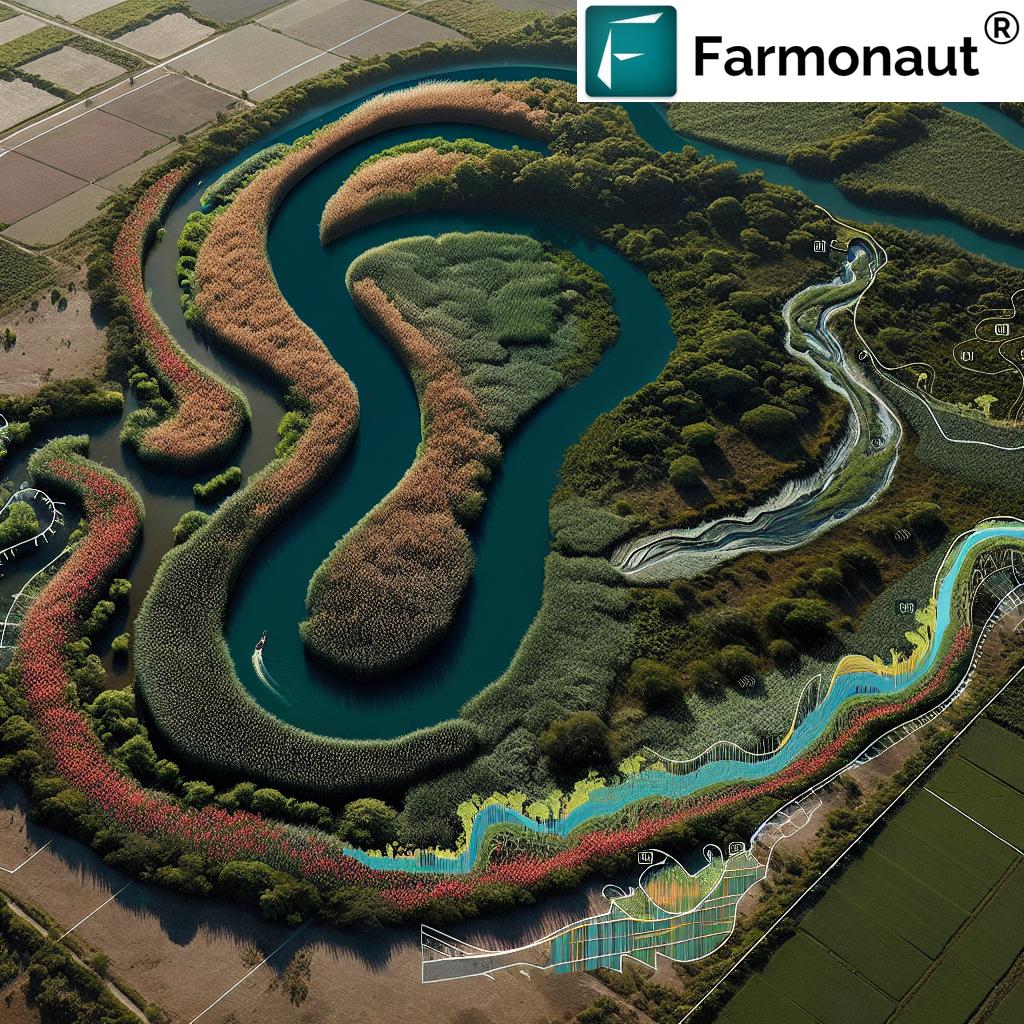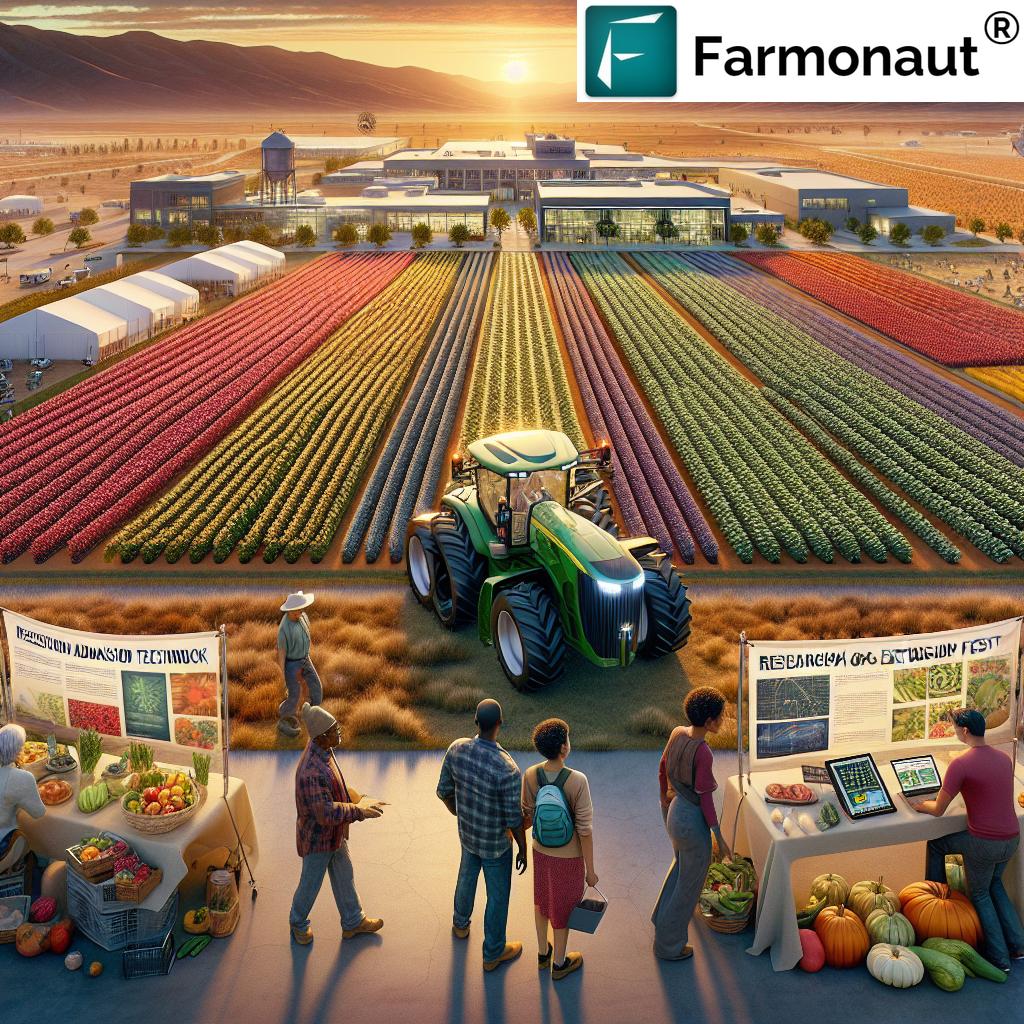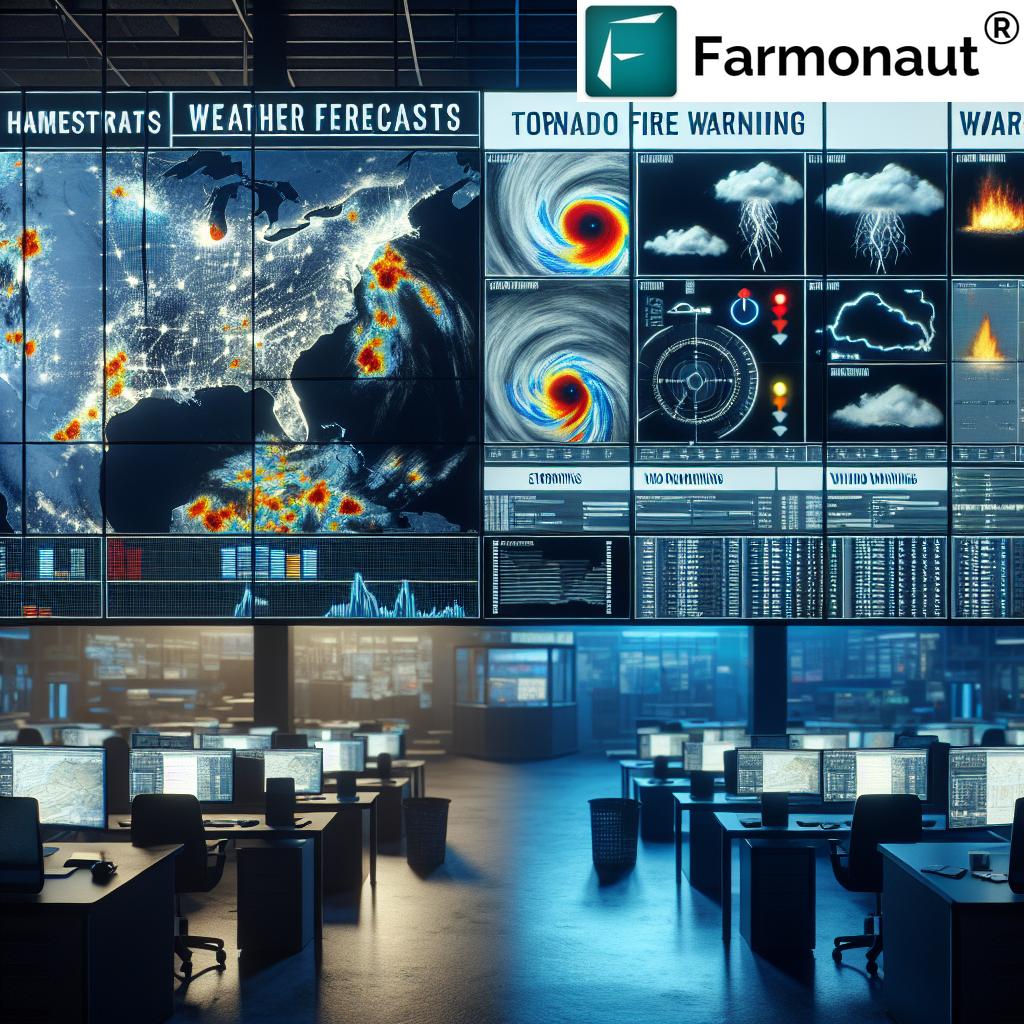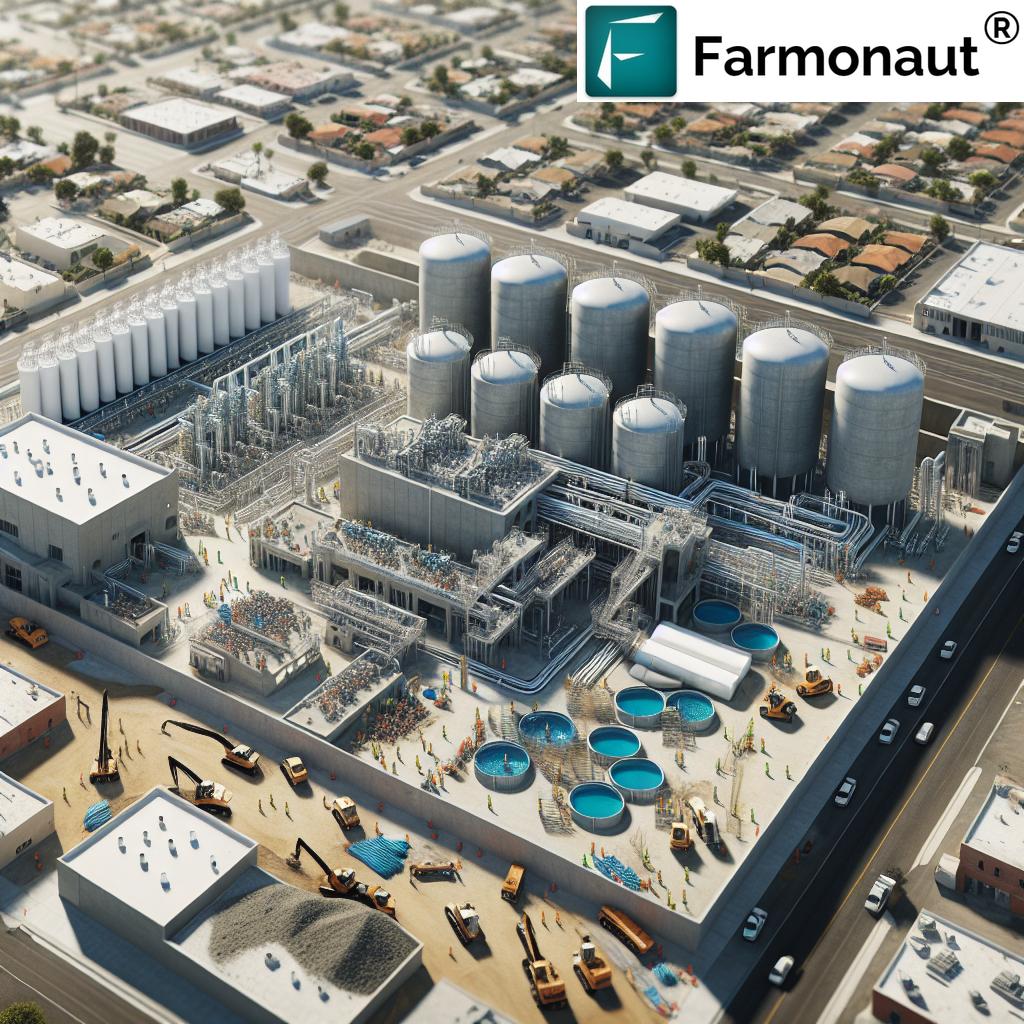Revolutionizing Agriculture: How AI-Powered Drones Are Transforming Precision Farming in Florida
“The global drone market is projected to reach $244.95 billion by 2032, growing at a CAGR of 22.4%.”
In the sun-drenched fields of Florida, a technological revolution is taking flight. AI-powered drones are soaring above citrus groves and vegetable farms, ushering in a new era of precision agriculture that promises to transform the way we grow food. As we delve into this cutting-edge intersection of artificial intelligence and aerial technology, we’ll explore how these high-tech helpers are changing the face of farming in the Sunshine State and beyond.
The Rise of AI Drones in Agriculture
The integration of artificial intelligence and drone technology has created a powerful synergy that is revolutionizing the agricultural sector. These intelligent flying machines are not just eyes in the sky; they’re sophisticated data collectors and analyzers, capable of providing farmers with unprecedented insights into their crops and land.
In Florida, where agriculture is a cornerstone of the economy, the adoption of AI drones for commercial use is gaining rapid momentum. From the sprawling citrus orchards to the vast sugar cane fields, farmers are embracing these aerial assistants to boost efficiency, reduce costs, and improve crop yields.
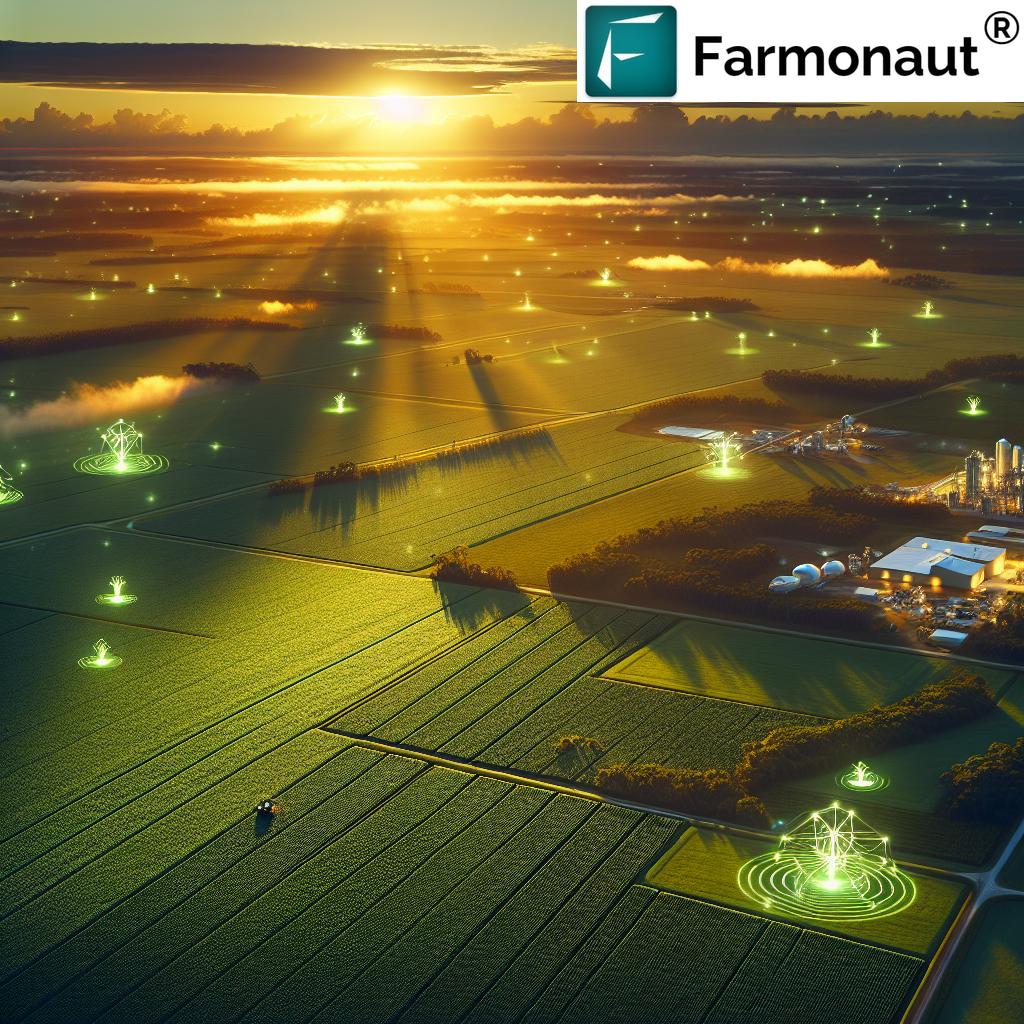
The Global Drone Market: A Snapshot
Before we zoom in on Florida’s farms, let’s take a broader view of the global drone market. The industry is experiencing explosive growth, driven by rapid advancements in drone technology and artificial intelligence. Market analysts project that the global drone market will reach a staggering $244.95 billion by 2032, with a compound annual growth rate (CAGR) of 22.4%.
This growth is fueled by several factors:
- Technological innovations in AI and machine learning
- Improved battery life and flight capabilities
- Enhanced sensors and imaging technology
- Increasing adoption across various industries, including agriculture
As the market expands, we’re seeing a surge in drone manufacturing and sales, with companies focusing on delivering drones with greater payload capacities, extended flight times, and more sophisticated AI capabilities.
AI Drones: The Farmer’s New Best Friend
In the realm of precision agriculture, AI-powered drones are proving to be invaluable tools for farmers. These aerial assistants offer a range of benefits that are transforming traditional farming practices:
- Crop Monitoring: Drones equipped with multispectral and thermal cameras can assess crop health, detect stress, and identify potential issues before they become visible to the naked eye.
- Soil Analysis: By capturing detailed imagery of fields, drones help farmers analyze soil conditions, moisture levels, and nutrient content, enabling more precise application of fertilizers and irrigation.
- Pest and Disease Detection: AI algorithms can process drone-captured images to spot early signs of pest infestations or disease outbreaks, allowing for targeted interventions.
- Yield Prediction: By analyzing crop growth patterns and historical data, AI drones can provide accurate yield estimates, helping farmers plan harvests and manage resources more effectively.
- Precision Spraying: Some advanced drones can even carry and distribute pesticides or fertilizers with pinpoint accuracy, reducing waste and environmental impact.
“Rapid advancements in drone technology and AI are driving significant growth in the commercial drone industry.”
Florida’s Agricultural Landscape: Ripe for Innovation
Florida’s diverse agricultural sector, which contributes billions to the state’s economy, is an ideal testing ground for AI drone technology. The state’s farmers face unique challenges, including:
- Unpredictable weather patterns
- Pest pressures
- Water management issues
- Labor shortages
AI-powered drones are helping address these challenges by providing real-time data and insights that enable more informed decision-making.
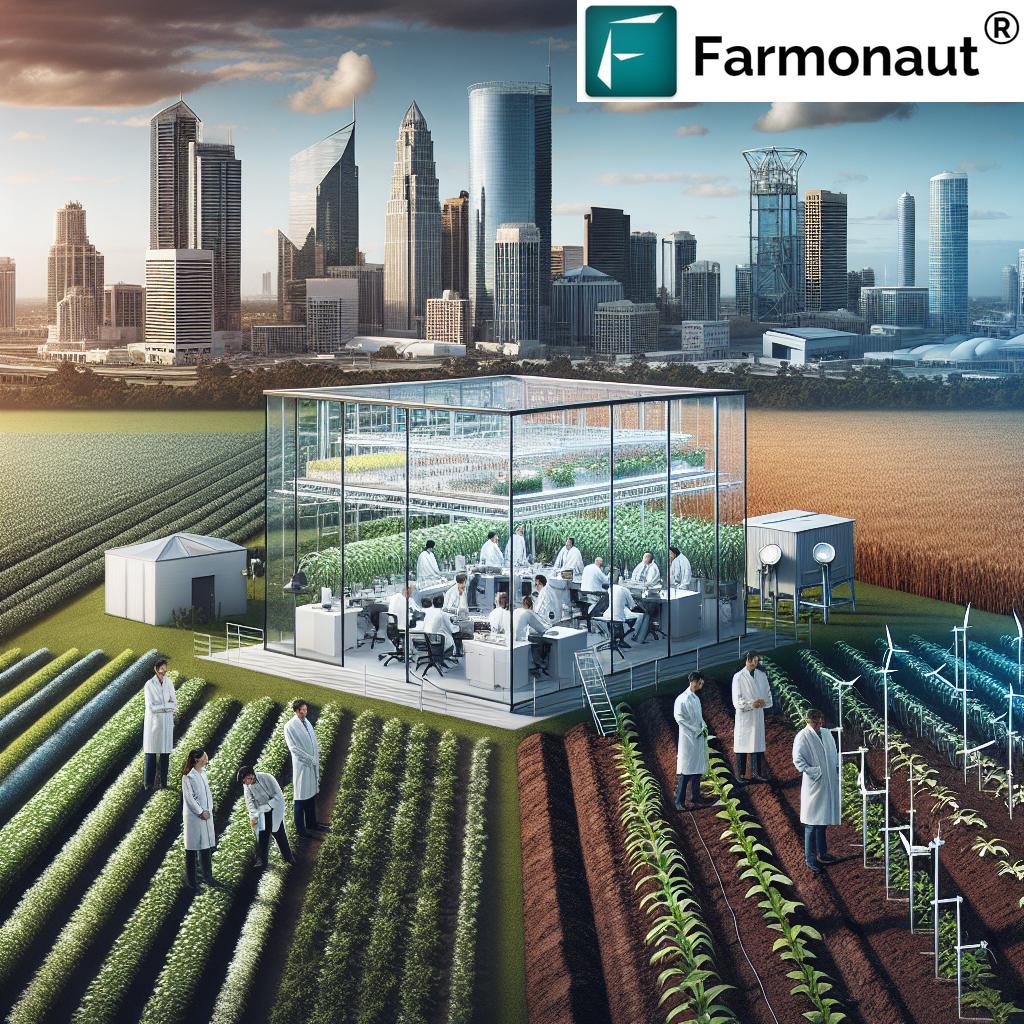
Case Study: Citrus Groves and AI Drones
Florida’s citrus industry, which has been battling the devastating citrus greening disease, is finding new hope in AI drone technology. Drones equipped with hyperspectral cameras and machine learning algorithms can detect signs of the disease before symptoms are visible, allowing for early intervention and potentially saving entire groves.
One citrus farmer in central Florida reported a 30% reduction in disease-related losses after implementing an AI drone monitoring program. This success story is just one example of how this technology is making a tangible difference in the state’s agricultural sector.
The Role of Artificial Intelligence in Drone Technology
The true power of agricultural drones lies in their artificial intelligence capabilities. AI and machine learning algorithms process the vast amounts of data collected by drones, turning raw information into actionable insights for farmers. Some key applications include:
- Image Recognition: AI can analyze drone-captured images to identify plant species, detect anomalies, and assess crop health.
- Predictive Analytics: By combining historical data with real-time observations, AI can forecast crop yields, predict pest outbreaks, and optimize resource allocation.
- Autonomous Navigation: Advanced AI enables drones to navigate complex environments, avoid obstacles, and optimize flight paths for efficient data collection.
- Data Integration: AI systems can integrate drone data with other sources, such as weather forecasts and soil sensors, to provide comprehensive farm management recommendations.
Drone as a Service: Democratizing Access to Technology
While the benefits of AI drones in agriculture are clear, the initial investment can be substantial. This is where the concept of “Drone as a Service” (DaaS) comes into play. DaaS providers offer drone services to farmers on a subscription or pay-per-use basis, making this technology accessible to farms of all sizes.
In Florida, several companies are pioneering the DaaS model for agriculture. These services typically include:
- Regular drone flights over farmland
- Data collection and analysis
- AI-powered insights and recommendations
- Technical support and training
By leveraging DaaS, even small family farms in Florida can benefit from cutting-edge AI drone technology without the need for significant upfront investment.
The Future of Precision Agriculture in Florida
As AI drone technology continues to evolve, we can expect to see even more innovative applications in Florida’s agricultural sector. Some exciting developments on the horizon include:
- Swarm Technology: Multiple drones working in coordination to cover large areas more efficiently.
- Integrated IoT Systems: Drones working in tandem with ground-based sensors and automated farm equipment for comprehensive farm management.
- Advanced AI Decision Support: More sophisticated AI systems that can make autonomous decisions about crop management, potentially controlling irrigation systems or deploying targeted interventions.
- Urban Air Mobility Solutions: As regulations evolve, we may see drones playing a role in transporting agricultural products from farms to urban centers, streamlining the supply chain.
Challenges and Considerations
While the future of AI drones in Florida agriculture looks bright, there are still challenges to overcome:
- Regulatory Framework: As drone technology advances, regulations must keep pace to ensure safety and privacy while allowing for innovation.
- Data Security: With drones collecting vast amounts of farm data, ensuring the security and privacy of this information is crucial.
- Training and Education: Farmers and agricultural workers need training to effectively use and interpret data from AI drone systems.
- Environmental Considerations: As drone use increases, potential impacts on wildlife and ecosystems must be carefully monitored and mitigated.
The Role of Companies Like Farmonaut
In the evolving landscape of precision agriculture, companies like Farmonaut are playing a crucial role in bridging the gap between advanced technology and practical farm management. While Farmonaut itself doesn’t manufacture drones, its satellite-based farm management solutions complement and enhance the capabilities of AI-powered drones in several ways:
- Data Integration: Farmonaut’s platform can integrate data from various sources, including drones, satellites, and ground sensors, providing a comprehensive view of farm health and productivity.
- AI-Powered Analytics: The company’s Jeevn AI advisory system can analyze drone-captured imagery alongside satellite data to deliver more accurate and actionable insights to farmers.
- Accessibility: Through its mobile and web applications, Farmonaut makes complex agricultural data easily accessible to farmers, complementing the visual insights provided by drones.
- Scalability: While drones are excellent for detailed, localized observations, Farmonaut’s satellite-based solutions offer broader coverage, allowing for seamless scaling from small plots to large agricultural operations.
For more information on how Farmonaut’s solutions can complement drone technology in precision agriculture, visit their web application.
Drone Technology Applications in Precision Agriculture
| Drone Application | Technology Used | Benefits for Farmers | Estimated Efficiency Improvement |
|---|---|---|---|
| Crop Monitoring | Multispectral cameras, AI image analysis | Early detection of crop stress, optimal harvest timing | 30-40% |
| Soil Analysis | Thermal sensors, AI-powered soil mapping | Precise fertilizer application, improved soil management | 25-35% |
| Irrigation Management | Thermal imaging, AI-driven water stress detection | Water conservation, prevention of over/under watering | 40-50% |
| Pest and Disease Detection | High-resolution cameras, AI pattern recognition | Early intervention, reduced crop losses | 50-60% |
| Yield Prediction | Machine learning algorithms, historical data analysis | Accurate harvest planning, improved market forecasting | 20-30% |
The Impact on Florida’s Agricultural Economy
The adoption of AI drone technology is poised to have a significant impact on Florida’s agricultural economy. By improving crop yields, reducing input costs, and minimizing losses due to pests and diseases, these innovations could potentially increase the profitability of farms across the state.
Moreover, the growth of the drone industry itself is creating new job opportunities in Florida, from drone operators and data analysts to AI specialists and agricultural technologists. This emerging sector is helping to diversify the state’s economy and position Florida as a leader in agricultural innovation.
Sustainability and Environmental Benefits
Beyond the economic advantages, AI drones are contributing to more sustainable farming practices in Florida. By enabling precise application of water, fertilizers, and pesticides, these technologies are helping to reduce the environmental impact of agriculture. This aligns with growing consumer demand for sustainably produced food and could give Florida farmers a competitive edge in the marketplace.
For farmers interested in tracking and reducing their environmental impact, Farmonaut offers a carbon footprinting tool that can complement drone-based monitoring systems.
The Role of Research and Development
Florida’s universities and research institutions are playing a crucial role in advancing AI drone technology for agriculture. Collaborations between academic researchers, technology companies, and farmers are driving innovation and ensuring that new developments are tailored to the specific needs of Florida’s agricultural sector.
These research efforts are focused on areas such as:
- Developing AI algorithms specifically for Florida’s crops and growing conditions
- Improving drone hardware for longer flight times and greater payload capacity
- Exploring new applications of drone technology in agriculture
- Studying the long-term impacts of drone use on farm productivity and sustainability
The Global Context: Florida as a Model for AI Drone Adoption
As Florida embraces AI drone technology in agriculture, it’s becoming a model for other regions around the world. The lessons learned and best practices developed in the Sunshine State are being closely watched by farmers and policymakers globally, particularly in areas with similar climate challenges or crop types.
This global interest underscores the potential for Florida to become a hub for agricultural drone technology, attracting investment and fostering innovation that could benefit farmers worldwide.
The Future of Farming: A Symbiosis of Human and Machine
As we look to the future of farming in Florida and beyond, it’s clear that AI drones will play an increasingly important role. However, it’s crucial to remember that these technologies are tools to enhance, not replace, human expertise. The most successful farms of the future will likely be those that effectively combine the intuition and experience of skilled farmers with the data-driven insights provided by AI and drone technology.
This symbiosis of human and machine intelligence promises to make farming more efficient, sustainable, and resilient in the face of challenges like climate change and population growth.
Conclusion: A New Era for Florida Agriculture
The integration of AI-powered drones into Florida’s agricultural practices marks the beginning of a new era for the state’s farmers. By providing unprecedented levels of data and insight, these technologies are enabling more precise, efficient, and sustainable farming practices.
As the global drone market continues to grow and innovate, Florida’s agricultural sector is well-positioned to reap the benefits. From improved crop yields and reduced input costs to enhanced sustainability and new economic opportunities, the impact of AI drones on Florida’s farms is set to be transformative.
The journey of integrating AI drones into agriculture is just beginning, and the future holds exciting possibilities. As technology continues to evolve and farmers become more adept at leveraging these tools, we can expect to see even greater innovations and efficiencies in the years to come.
For Florida’s farmers, the sky is no longer the limit – it’s just the beginning.
FAQs
- Q: How do AI drones improve crop monitoring?
A: AI drones use advanced cameras and sensors to capture detailed imagery of crops. AI algorithms then analyze this data to detect early signs of stress, disease, or nutrient deficiencies, allowing farmers to take prompt action. - Q: Are AI drones cost-effective for small farms?
A: While the initial investment can be significant, many small farms are accessing this technology through Drone as a Service (DaaS) providers, making it more affordable. The efficiency gains often outweigh the costs. - Q: How do AI drones contribute to sustainable farming?
A: By enabling precise application of water, fertilizers, and pesticides, AI drones help reduce waste and minimize environmental impact. They also improve overall farm efficiency, leading to more sustainable practices. - Q: What regulations govern the use of drones in Florida agriculture?
A: Drone use in Florida is regulated by both federal (FAA) and state laws. Farmers must comply with registration requirements, flight restrictions, and privacy regulations. It’s important to stay updated on the latest rules. - Q: How does AI drone technology integrate with other farm management systems?
A: AI drones can be integrated with various farm management systems, including irrigation controls, weather stations, and crop management software. This integration allows for a comprehensive approach to precision agriculture.
Earn With Farmonaut: Affiliate Program
Earn 20% recurring commission with Farmonaut’s affiliate program by sharing your promo code and helping farmers save 10%. Onboard 10 Elite farmers monthly to earn a minimum of $148,000 annually—start now and grow your income!
Farmonaut Subscriptions
For more information on Farmonaut’s services and to access their platform, visit their website:
Download the Farmonaut mobile apps:
For developers interested in integrating Farmonaut’s technology into their own applications, check out the API and API Developer Docs.


